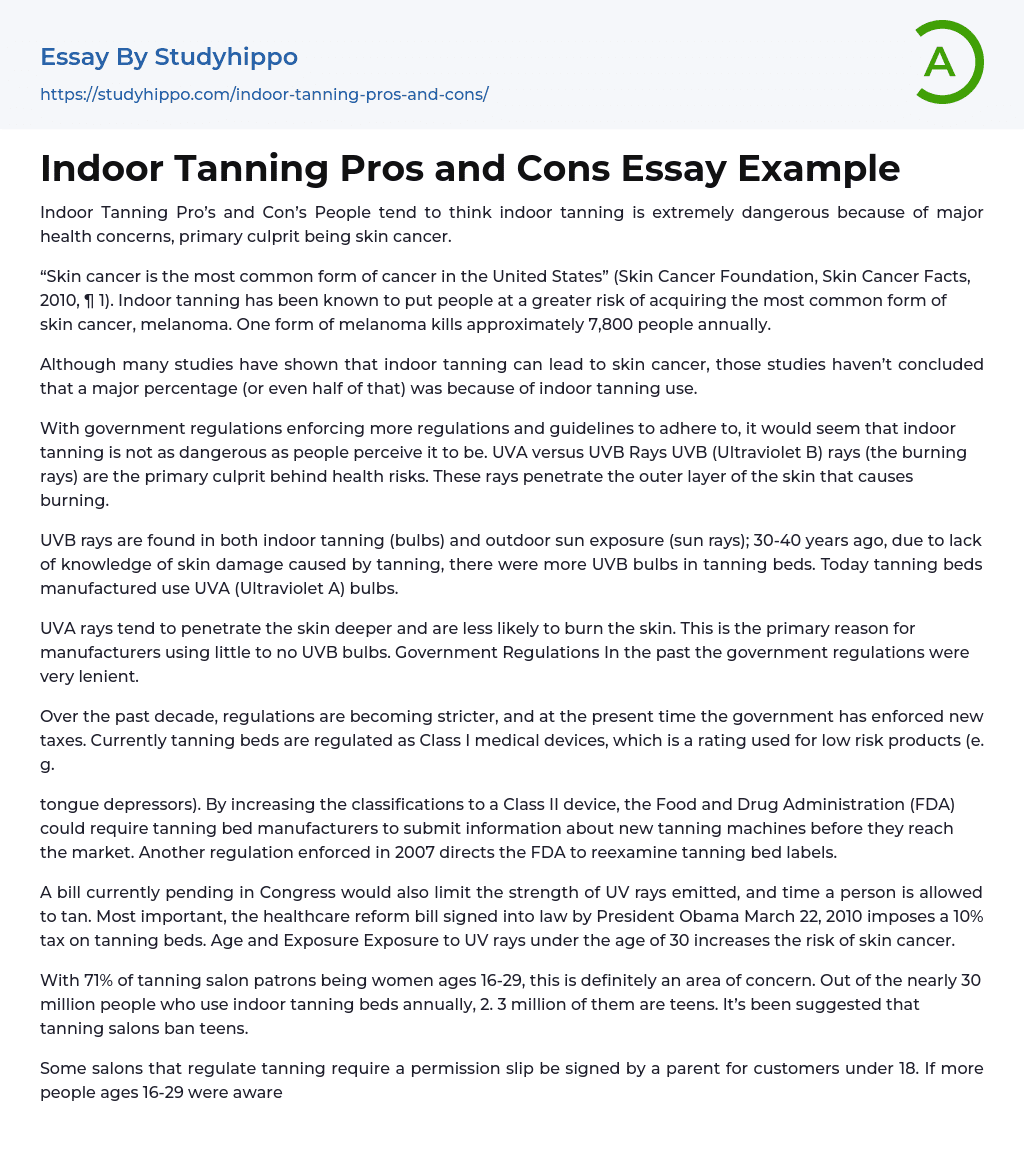The benefits and drawbacks of indoor tanning are a controversial topic. While some argue that it increases the risk of melanoma, research studies have not conclusively determined whether indoor tanning usage accounts for more than 50% of skin cancer cases (Skin Cancer Foundation, Skin Cancer Facts, 2010, ¶ 1). Government regulations have become stricter over time, making the risks associated with indoor tanning less significant. It is important to consider the type of ultraviolet rays emitted by tanning beds. UVB rays are responsible for health risks but modern tanning beds use UVA bulbs instead as they penetrate deeper into the skin and are less likely to cause burns. Indoor tanning is now regulated as Class I medical devices which carry low-risk classification compared to thirty or forty years ago when there were fewer restrictions. However, if the FDA upgrades tanning beds
...to a Class II device manufacturers must provide information on new machines. Congress is considering legislation that would regulate UV ray strength and tanning time.
President Obama's healthcare reform bill introduced a 10% tax on tanning beds, with concerns raised over the increased risk of skin cancer for women under 29 who make up 71% of salon patrons. Annually, nearly 30 million people use indoor tanning facilities, including almost two and a half million teenagers. While some salons require parental permission slips for customers under 18, others suggest banning teens altogether. Enforcing stricter regulations and FDA guidelines for teenagers or implementing bans where necessary could significantly improve awareness regarding the dangers of increased UV exposure linked to skin cancer in individuals aged between16-29 years. Proper education and regulation can make indoor tanning safer tha
sunbathing or being outside; hence it is crucial that prospective customers fully comprehend the health risks associated with indoor tanning. Salons and manufacturers have an obligation to follow government regulations and prioritize their clients' wellbeing by informing them about safer alternatives such as spray tanning. With appropriate education on age restrictions and exposure levels along with strict enforcement of regulations, indoor tanning can be less hazardous than previously believed.
- Accounting essays
- Marketing essays
- Automation essays
- Business Cycle essays
- Business Model essays
- Business Operations essays
- Business Software essays
- Corporate Social Responsibility essays
- Infrastructure essays
- Logistics essays
- Manufacturing essays
- Multinational Corporation essays
- Richard Branson essays
- Small Business essays
- Cooperative essays
- Family Business essays
- Human Resource Management essays
- Sales essays
- Market essays
- Online Shopping essays
- Selling essays
- Strategy essays
- Management essays
- Franchising essays
- Quality Assurance essays
- Business Intelligence essays
- Corporation essays
- Stock essays
- Shopping Mall essays
- Harvard Business School essays
- Harvard university essays
- Trade Union essays
- Cooperation essays
- News Media essays
- Waste essays
- Andrew Carnegie essays
- Inventory essays
- Customer Relationship Management essays
- Structure essays
- Starting a Business essays
- Accounts Receivable essays
- Auditor's Report essays
- Balance Sheet essays
- Costs essays
- Financial Audit essays
- International Financial Reporting Standards essays
- Tax essays
- Accountability essays
- Cash essays
- Principal essays




